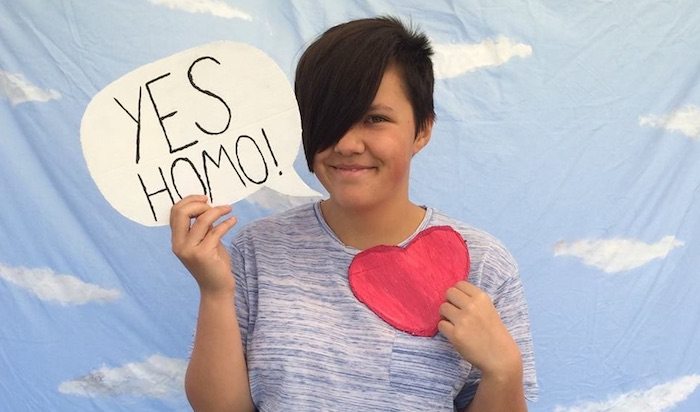Adjusting to university life can be hard enough without also having to navigate issues surrounding your sexuality or gender identity.
“University is an extremely mixed bag of a place,” says Jaye, a second-year student at Victoria University in Wellington.
“While Wellington is pretty accepting of various LGBT+ Identities, studying with thousands of other people who are likely to be from many different backgrounds, and many of whom are likely to be transphobic or homophobic is extremely daunting as an LGBT+ student.
“I identify as Takatāpui- an umbrella term for LGBT+ Māori people, and as someone who is both queer and gender diverse as well as māori I generally have to be very conscious of how I act and how people perceive me in everyday university life.”
Jaye studying towards a conjoint degree majoring in Ecology and Biodiversity, Marine Biology, and English Literature. They also minoring in Māori studies, with emphasis on learning the language, but don’t feel supported by the university.
They say while there are wonderful student-lead groups for LGBT+ youth such as Uni-Q, the university itself does very little to make the campus, or its services, more accessible for, and more accepting towards, rainbow youth.
“For example, there is only one easily accessible set of gender-neutral bathrooms located in the hub on Kelburn campus,” Jaye says “and the walls of those bathrooms are often covered in some form of homophobic or transphobic graffiti.”
When you enrol as a student at the uni, you’re only provided with two options for gender; male or female.
There are many issues that Jaye comes up against as a takatāpui person navigating university life at Victoria.
“Firstly, there are my own issues to do with my own dysphoria and how I am perceived based on cisnormativity and heteronormativity. Ideally, I’d like to be able to use male bathrooms as they match the way I feel about my gender better than female bathrooms, but I feel unsafe doing so and that I might be putting myself at risk in doing so.
“Many people in my general circles also have difficulty with using my correct pronouns (they/them or he/him), and mostly the only people who respect my pronouns are my close friends and the people I know within the LGBT+ community,” they say.
“I struggle not only with navigating spaces as a trans/nonbinary person, but also with navigating the university as a Māori person.”
“Māori people are underrepresented in tertiary education and many of my courses are majority Pākehā, and being so diverse in many respects can also be limiting, as many other students will look to you to be the educator about different issues that affect you, and in a sense you have to be a model for the group(s) you are a part of.”
Jaye only feels safe at uni because they are not out to everyone regarding their my gender
“Most people assume I’m cis, again because of cisnormativity. If I were a trans person who was transitioning medically, or I was more visible about my gender, I would very unsafe and hyper-visible.”
Jaye has experienced varying amounts of biphobia from people within the LGBT+ communities.
“As someone who is bisexual, assigned female at birth, and in a long-term monogamous relationship with a man, I feel sometimes as if I’m ‘not queer enough’.
“Things get more complicated when you factor my gender in- because I’m some form or other of nonbinary, no attraction I feel is heterosexual.
They say sometimes they feel like a bit of an outsider because of the way their labels interact with each other- and because for them, labels to describe sexuality and gender in a western context are too restricting.
“Additionally, as someone who’s mixed NZ-European, Ukranian, Japanese and Māori, I don’t really fit nicely into any specific culture. I struggle as well with how white some LGBT+ spaces can be, and the occasional lack of intersectionality between cultural and racial issues and LGBT+ issues, particularly in high school, but generally these spaces at a university level are pretty knowledgeable.”
If the university wants to better support Jaye and other queer, sexuality and gender diverse youth then they need to actively try to make services and facilities more accessible for them.
These include mental and physical health services “as we are over-represented in statistics regarding mental illness, suicide, and bullying.”
Jaye also suggests creating more gender-neutral bathrooms, and actively promoting resources and programs to spread awareness and education of what it means to be LGBT+.

















